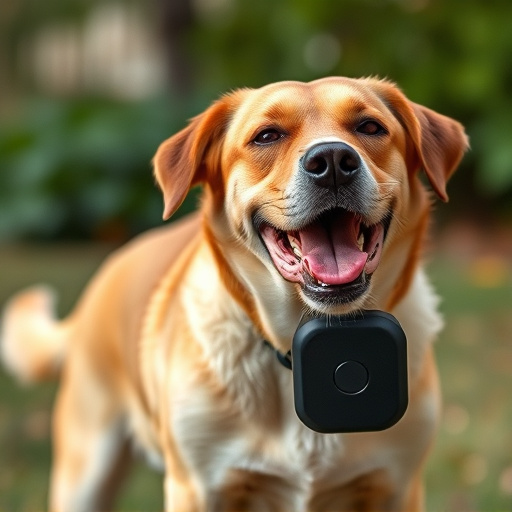Mounting options for electronic dog deterrents, from freestanding to wall/fence mounts, impact effectiveness and user experience. Outdoor devices protect against weather, while indoor setups offer discreet placement. Proper installation, regular maintenance, and selecting suitable triggers ensure optimal performance for controlling unwanted barking.
“Curious about training your dog with an electronic barking prevention system? Our comprehensive guide dives into this effective approach to curb excessive barking. From understanding the technology behind these systems to exploring different mounting options, we cover it all. Discover the various types of electronic deterrents and their unique installation methods, ensuring you choose the perfect fit for your home or yard. Learn from our expert tips to navigate installation challenges and harness the power of these innovative tools.”
- Understanding Dog Barking Prevention Systems: A Comprehensive Overview
- Types of Electronic Deterrents and Their Mounting Methods
- Choosing the Right Mounting Option for Your Setup
- Installation Tips and Common Challenges to Avoid
Understanding Dog Barking Prevention Systems: A Comprehensive Overview
Dog barking prevention systems, also known as electronic dog deterrents, are designed to address excessive canine noise in a humane and effective manner. These systems operate by emitting sounds or vibrations that disrupt a dog’s barking pattern, encouraging calmer behavior. Key components typically include a control panel, a sensor to detect barking, and adjustable output devices that can be strategically placed around the property.
Mounting options for electronic dog deterrents play a crucial role in their effectiveness and user experience. Options range from freestanding units that can be easily moved and repositioned, ideal for smaller areas or temporary solutions, to wall-mounted or fence-mounted devices that provide a more permanent solution. The latter are particularly effective for larger properties as they offer consistent coverage, ensuring the system remains in place regardless of the time of day or weather conditions.
Types of Electronic Deterrents and Their Mounting Methods
Electronic dog barking deterrents come in various forms, each with unique mounting options tailored to different preferences and environments. Among them are ultrasonic devices that emit high-frequency sounds inaudible to humans but irritating to dogs, typically mounted on walls or fences. These devices activate when a dog barks, effectively ceasing the behavior without causing harm. Another type is the spray deterrent, which releases a mild, non-toxic spray when triggered by bark sensors, often installed on doors or windowsills.
Mounting options for these electronic deterrents range from permanent fixtures like bolted wall mounts to more flexible solutions like suction cups or battery-powered designs that can be easily moved and placed anywhere within the dog’s environment. Some even offer wireless activation, allowing you to control and monitor the device remotely via a smartphone app. Each mounting method caters to different needs, ensuring pet owners have versatile options for effective barking control while considering aesthetics and convenience.
Choosing the Right Mounting Option for Your Setup
When setting up an electronic dog barking deterrent system, selecting the optimal mounting option is key to its effectiveness and user experience. The first consideration is understanding your environment—whether it’s indoors or outdoors. For outdoor spaces, durable weatherproof options are essential to protect the device from varying elements, ensuring longevity and consistent performance. These devices can be mounted on walls, fences, or trees to deter barking from specific areas like yards or patios.
Indoor mounting presents a slightly different challenge but offers more flexibility in terms of aesthetics and placement. Discreetly placing the device near common barking triggers, such as windows or doors, allows for targeted intervention without compromising your home’s décor. Some systems offer magnetic mounts or adjustable stands, enabling you to position them optimally for maximum impact while ensuring they remain out of reach of curious pets.
Installation Tips and Common Challenges to Avoid
When installing an electronic dog barking prevention system, it’s crucial to select suitable mounting options tailored to your environment. For outdoor use, consider discreetly placing sensors near entry points or in strategic locations where excessive barking is most likely to occur, such as close to fences or gates. Indoor setups might involve mounting devices on walls or ceilings, ensuring they are out of reach for curious pets but still easily accessible for adjustments.
Common challenges often arise from improper installation leading to ineffective deterrents. To avoid these, ensure thorough reading and understanding of the product instructions. Inaccurate placement can result in false triggers or missed barks. Additionally, regular maintenance is key; check battery life, clean sensors, and test the system periodically to guarantee optimal performance.
When it comes to managing dog barking, electronic systems offer a humane and effective solution. By understanding the various types of deterrents and selecting the optimal mounting option for your setup, you can create an environment that discourages excessive barking without causing harm to your pet. Remember, proper installation is key to ensuring these devices function effectively while minimizing potential challenges. With the right approach, you can foster a calmer and more peaceful living space for both you and your furry companion.
